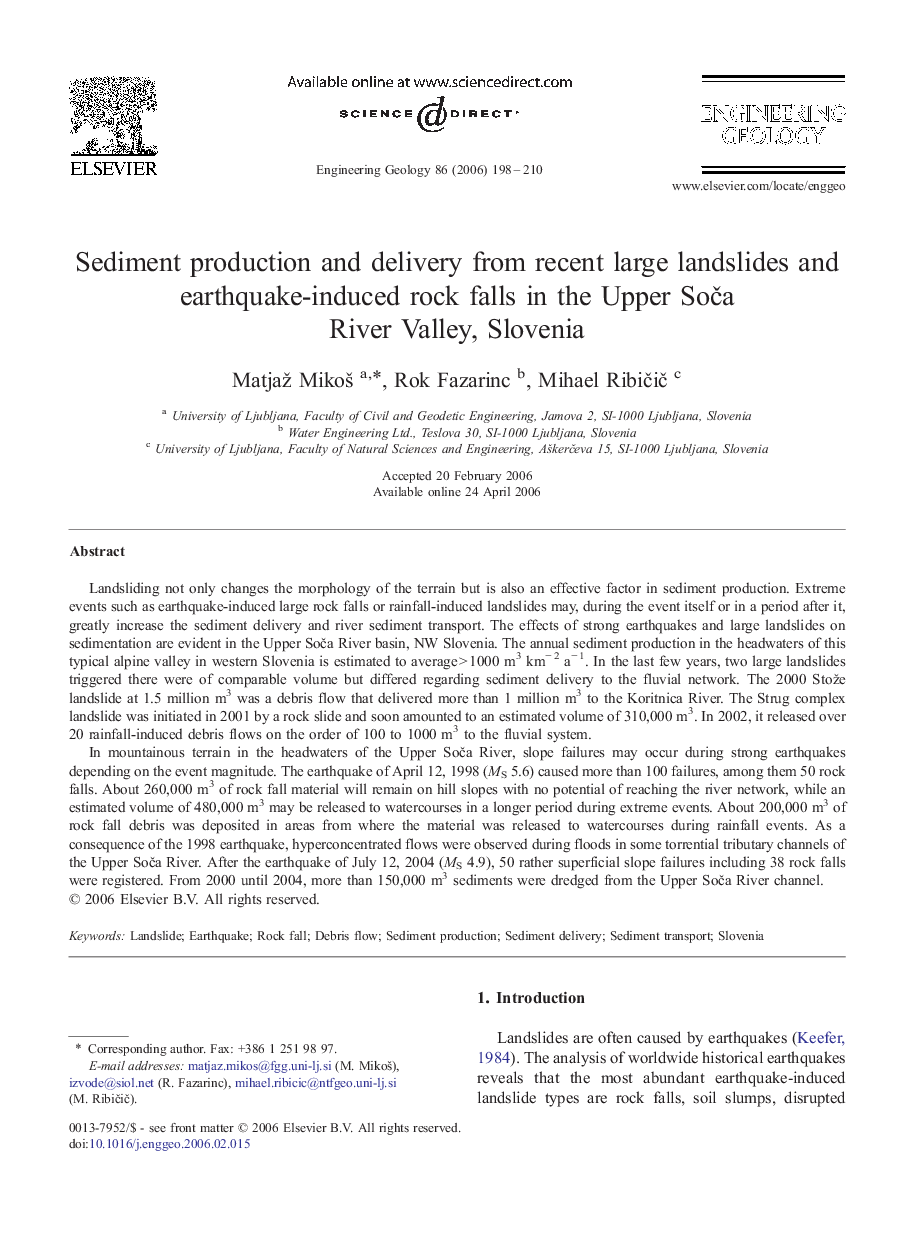| کد مقاله | کد نشریه | سال انتشار | مقاله انگلیسی | نسخه تمام متن |
|---|---|---|---|---|
| 4744832 | 1641917 | 2006 | 13 صفحه PDF | دانلود رایگان |

Landsliding not only changes the morphology of the terrain but is also an effective factor in sediment production. Extreme events such as earthquake-induced large rock falls or rainfall-induced landslides may, during the event itself or in a period after it, greatly increase the sediment delivery and river sediment transport. The effects of strong earthquakes and large landslides on sedimentation are evident in the Upper Soča River basin, NW Slovenia. The annual sediment production in the headwaters of this typical alpine valley in western Slovenia is estimated to average > 1000 m3 km− 2 a− 1. In the last few years, two large landslides triggered there were of comparable volume but differed regarding sediment delivery to the fluvial network. The 2000 Stože landslide at 1.5 million m3 was a debris flow that delivered more than 1 million m3 to the Koritnica River. The Strug complex landslide was initiated in 2001 by a rock slide and soon amounted to an estimated volume of 310,000 m3. In 2002, it released over 20 rainfall-induced debris flows on the order of 100 to 1000 m3 to the fluvial system.In mountainous terrain in the headwaters of the Upper Soča River, slope failures may occur during strong earthquakes depending on the event magnitude. The earthquake of April 12, 1998 (MS 5.6) caused more than 100 failures, among them 50 rock falls. About 260,000 m3 of rock fall material will remain on hill slopes with no potential of reaching the river network, while an estimated volume of 480,000 m3 may be released to watercourses in a longer period during extreme events. About 200,000 m3 of rock fall debris was deposited in areas from where the material was released to watercourses during rainfall events. As a consequence of the 1998 earthquake, hyperconcentrated flows were observed during floods in some torrential tributary channels of the Upper Soča River. After the earthquake of July 12, 2004 (MS 4.9), 50 rather superficial slope failures including 38 rock falls were registered. From 2000 until 2004, more than 150,000 m3 sediments were dredged from the Upper Soča River channel.
Journal: Engineering Geology - Volume 86, Issues 2–3, 10 August 2006, Pages 198–210